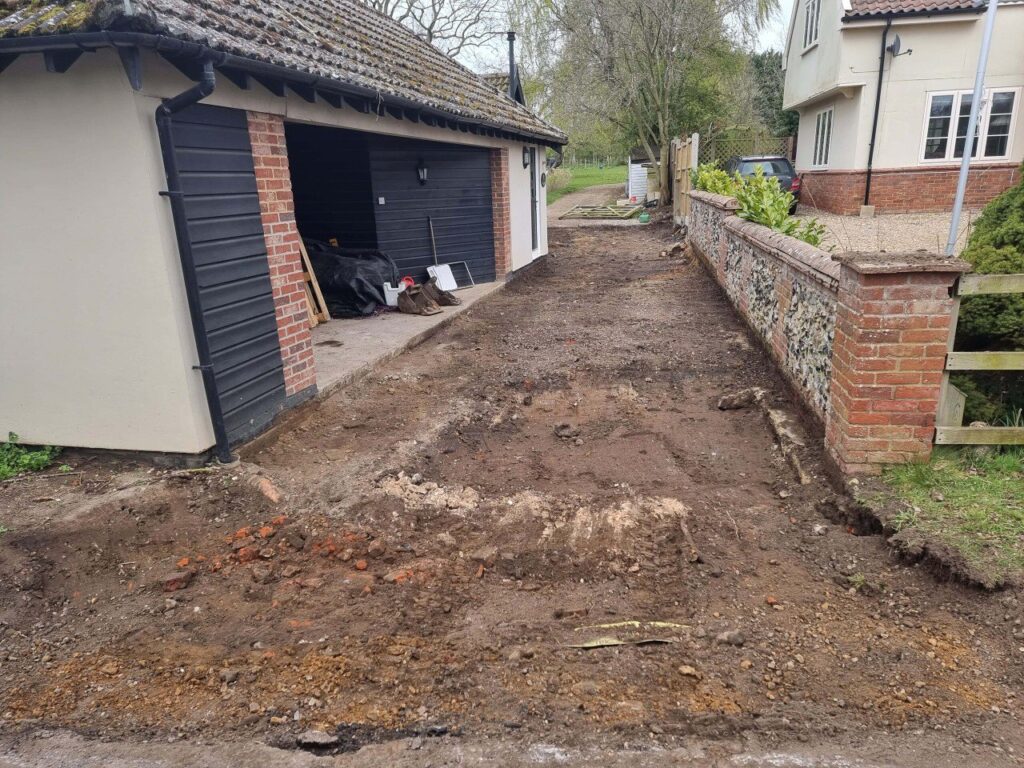Tarmac vs. Concrete for New Build Warehouses: Making the Right Choice
Introduction: Choosing the right surface material for newly built warehouses is crucial to ensure durability, functionality, and cost-effectiveness. Tarmac and concrete are two of the most common options for warehouse flooring, each with its own set of advantages and considerations. In this blog post, Gillingham Driveways will help you understand the differences between tarmac and concrete and guide you in making an informed decision for your new build warehouse project.
Tarmac for New Build Warehouses:
Tarmac Advantages:
- Cost-Effective: Tarmac is often more cost-effective than concrete, making it an attractive choice for warehouse owners looking to optimise their budgets.
- Quick Installation: Tarmac can be laid quickly, reducing construction time and allowing your warehouse to become operational sooner.
- Smooth Surface: Tarmac provides a smooth surface ideal for moving pallet jacks, forklifts, and other material handling equipment.
- Resilience: Tarmac can withstand heavy loads and constant traffic, making it suitable for the demands of warehouse operations.
- Low Maintenance: Regular sweeping and occasional resealing are typically all needed to keep tarmac surfaces in good condition, resulting in lower maintenance costs.
- Customisation: Tarmac can be customised with markings and designs to designate specific zones within the warehouse.
Tarmac Considerations:
- Durability: While tarmac is durable, it may not be as resistant to abrasion and impact as concrete, which could lead to surface wear over time.
- Surface Hardness: Tarmac is softer than concrete, which may result in minor scuffing and indentation from heavy machinery.
Concrete for New Build Warehouses:
Concrete Advantages:
- Exceptional Durability: Concrete is known for its exceptional durability and resistance to heavy loads, making it suitable for high-traffic warehouse areas.
- Minimal Surface Wear: Concrete surfaces are less prone to surface wear, scuffing, and indentation caused by heavy machinery.
- Longevity: Well-maintained concrete surfaces can have a longer lifespan compared to tarmac.
Concrete Considerations:
- Higher Initial Cost: Concrete tends to have a higher initial installation cost than tarmac.
- Longer Installation Time: The curing process for concrete may extend the construction timeline, delaying warehouse operations.
- Maintenance Needs: Concrete surfaces may require more frequent maintenance, including repairs and resealing, which can result in higher long-term maintenance costs.
Conclusion: The choice between tarmac and concrete for newly built warehouses ultimately depends on your specific requirements, budget, and priorities. Tarmac offers cost-effectiveness, quick installation, and ease of maintenance, while concrete provides exceptional durability and longevity.
Call us on: 01634 564 190
Click here to find out more about Gillingham Driveways
Click here to complete our contact form and see how we can help with your driveway needs.

